Brazilian Food: What to Eat in Brazil
One of the most popular reasons to visit Brazil is its amazing cuisine! Brazilian food is diverse, delicious, and unique, with plenty of incredible dishes to try when you're travelling through the country. If you're curious about what to eat in the country, or just want to learn more about Brazilian food, here are some of the best typical dishes to try.
Types of Foods Used in Brazilian Cuisine
Brazilian cuisine varies greatly from region to region but fresh meat and fish play an important role in the diet. Root vegetables such as cassava and yams, and fruits such as mango, papaya, guava, passion fruit and pineapple are among the local ingredients used in cooking.
Cassava or manioc, or yuca as it is also known (not to be confused with yucca), is probably the most important food in all of Brazil and used in the preparation of many dishes. It is a starchy tuber that is a major source of carbohydrates and comes in sweet and bitter varieties. Probably best not to try to cook with it yourself as the tuber contains cyanide and so the tuber must be prepared properly to ensure all of the toxins have been removed, making it safe to consume! But once prepared it has plenty of uses. It is often made into a flour and then used in cakes, breads and biscuits.
It can also be ground and toasted until it becomes a dry, crunchy meal. Farofa is a popular side dish made using manioc/cassava flour. The flour is pretty bland on its own so Brazilians usually sauté onions in plenty of butter, maybe adding bacon and parsley as well before adding the manioc flour and serving it alongside meat, rice and beans. You really should try it if you have the opportunity!
The National Dish of Brazil
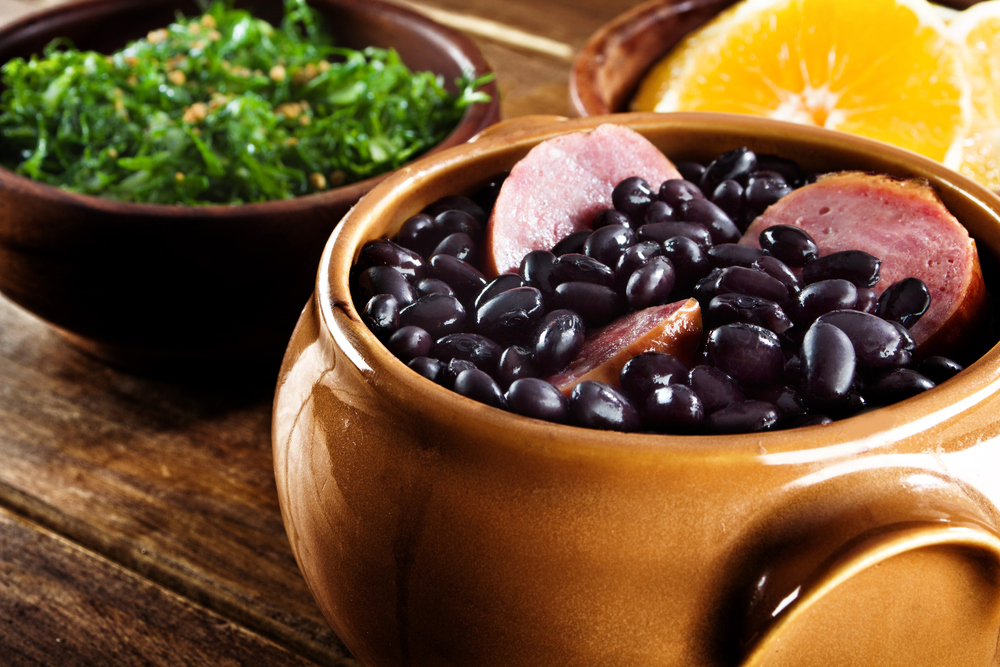
Feijoada is a typical Brazilian dish and considered to be Brazil’s national dish. Originally produced by Brazilian slaves, it has now been turned into a delicacy. The dish is a stew that consists mainly of beans and meat, simmered with herbs and spices. It is generally made using black beans, but in the northeast region of Bahia it is made with kidney beans.
Regions and Cooking Methods
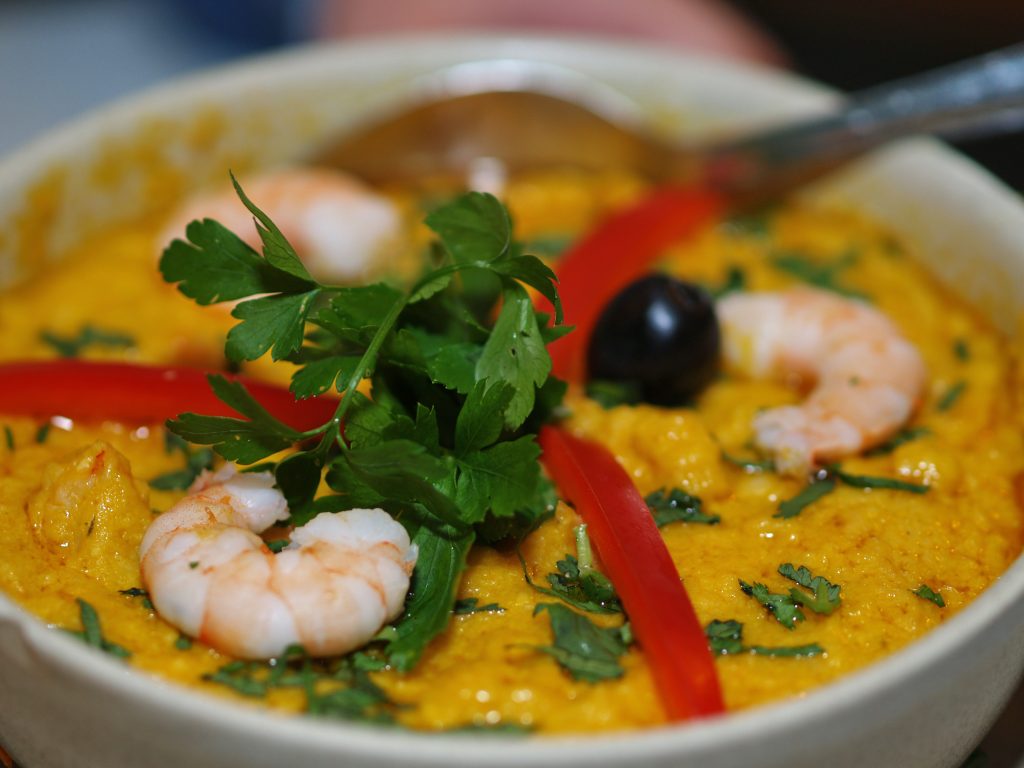
The cuisine and cooking methods are notably different in the north and Amazon, reflecting the Amerindian heritage. Fish is very important and is the base for stews and soups. One extremely popular dish is pato no tucupi – roasted duck marinated in lemon juice, oil and garlic and topped with a sauce made from manioc juice extracts and jambu leaves.
The food of north eastern Brazil is heavily influenced by African cuisine. A typical dish is vatapá, a creamy paste made from bread, shrimp, coconut milk, finely ground peanuts and palm oil.
In the south of Brazil, red meat features heavily in the cuisine, the churrasco (Brazilian barbeque) having originated here.
Typical Dishes
Other typical dishes that you might want to try for yourself whilst in Brazil include:
Coxinha
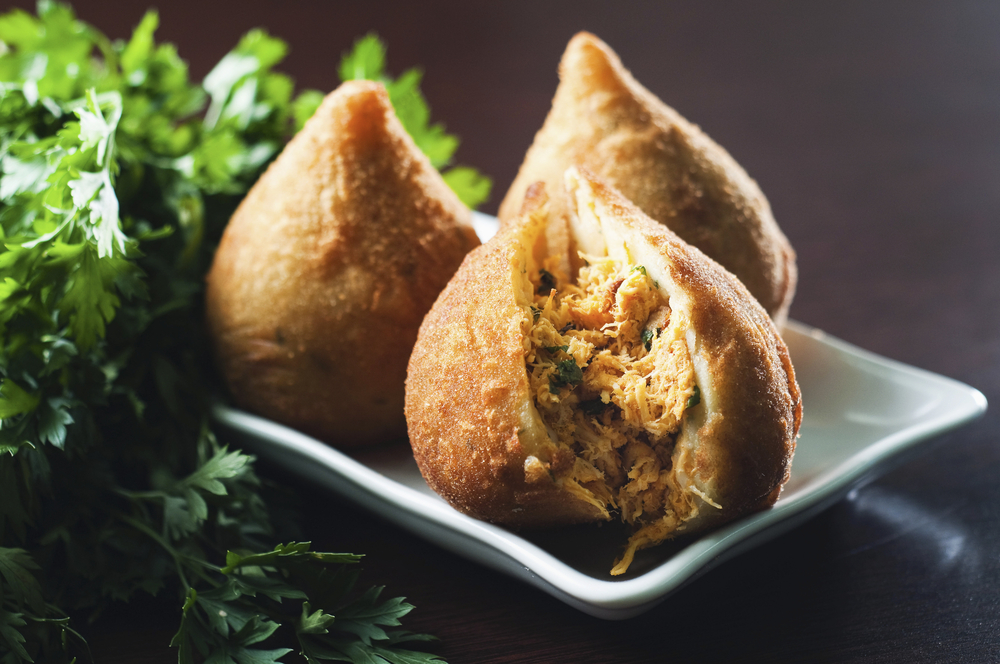
Coxinha is a thigh-shaped chicken croquette, with a tasty chicken salad filling. It's a popular street food that's fried and battered, with a crispy outside and a creamy filling once you bite into it.
Empanadas
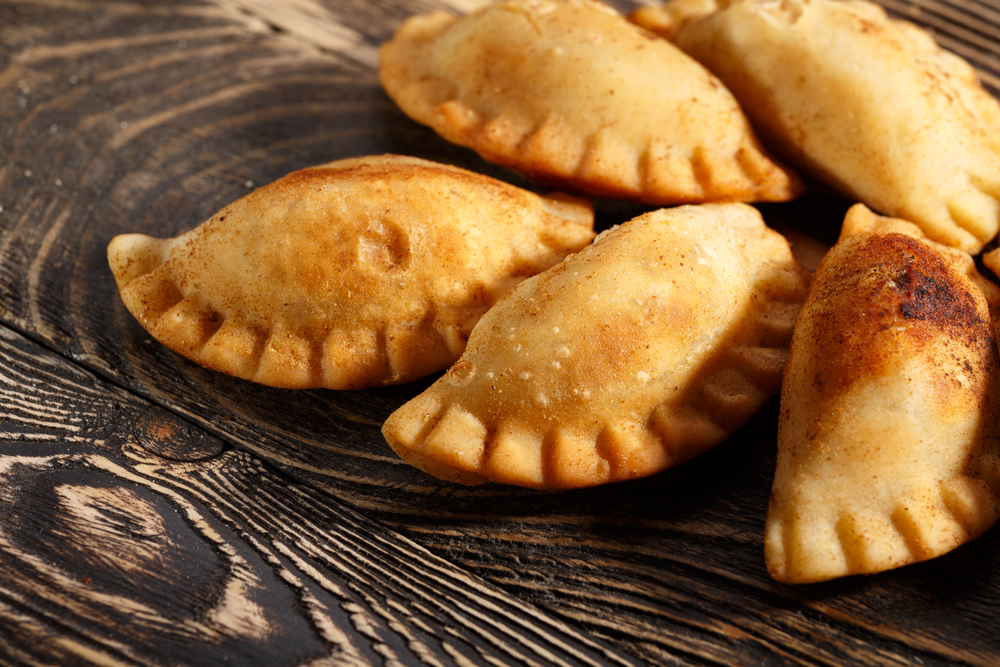
Empanadas, or pastry pies, are usually filled with prawns or chicken, but they can also contain any type of meat or vegetable. An empanada in Brazil is also called a pastel, and you'll find them just about anywhere!
Pao de queijo
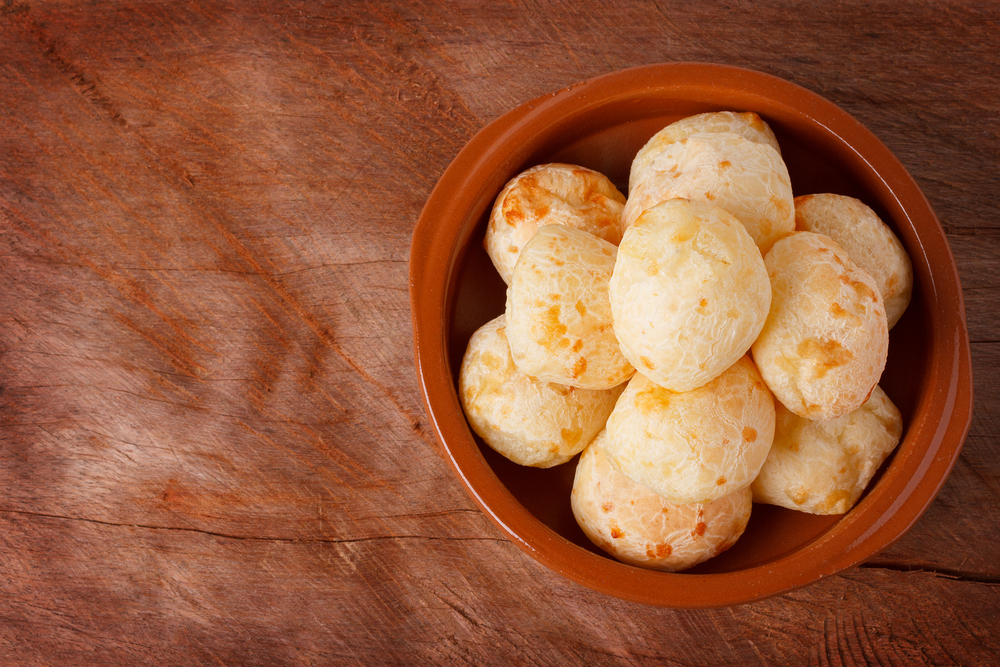
Pão de queijo is a type of cheese bread, a typical Brazilian snack. Made with a type of gluten-free bread and filled with cheese, these snacks can be eaten on their own, at breakfast, or served alongside soup.
Moqueca Capixaba

Moqueca capixaba is a traditional tomato and fish stew prepared in a clay pot. It's thick, delicious, and also contains shrimp, coconut, oil, lime, and peppers.
Cuscuz Branco
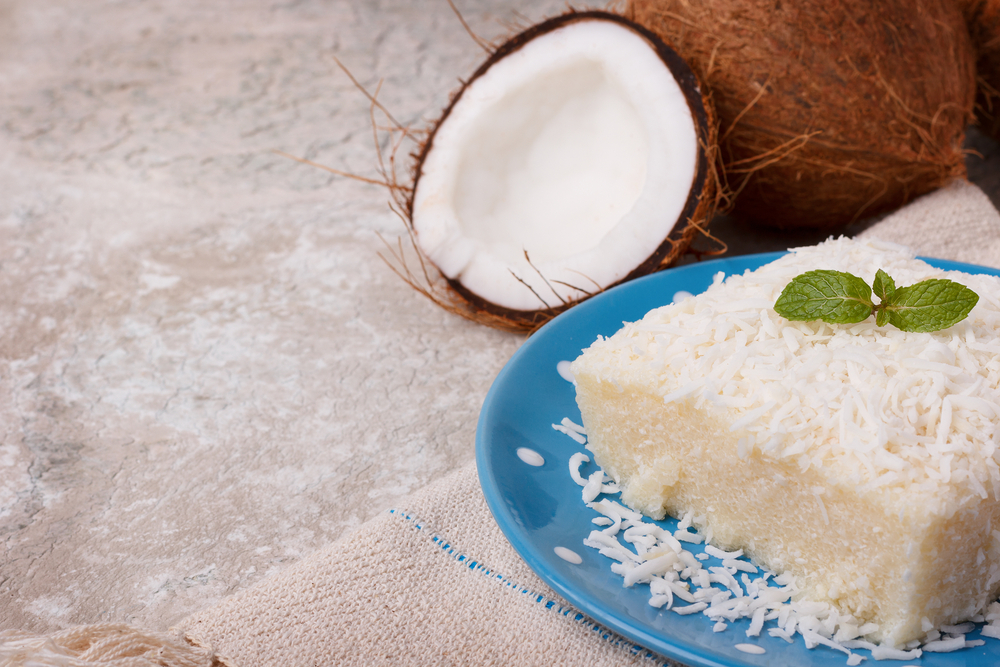
Cuscuz branco is a milled tapioca, cooked with coconut milk and sugar. This dessert is particularly possible in the North and Northeast regions of the country.
Caiprihinia
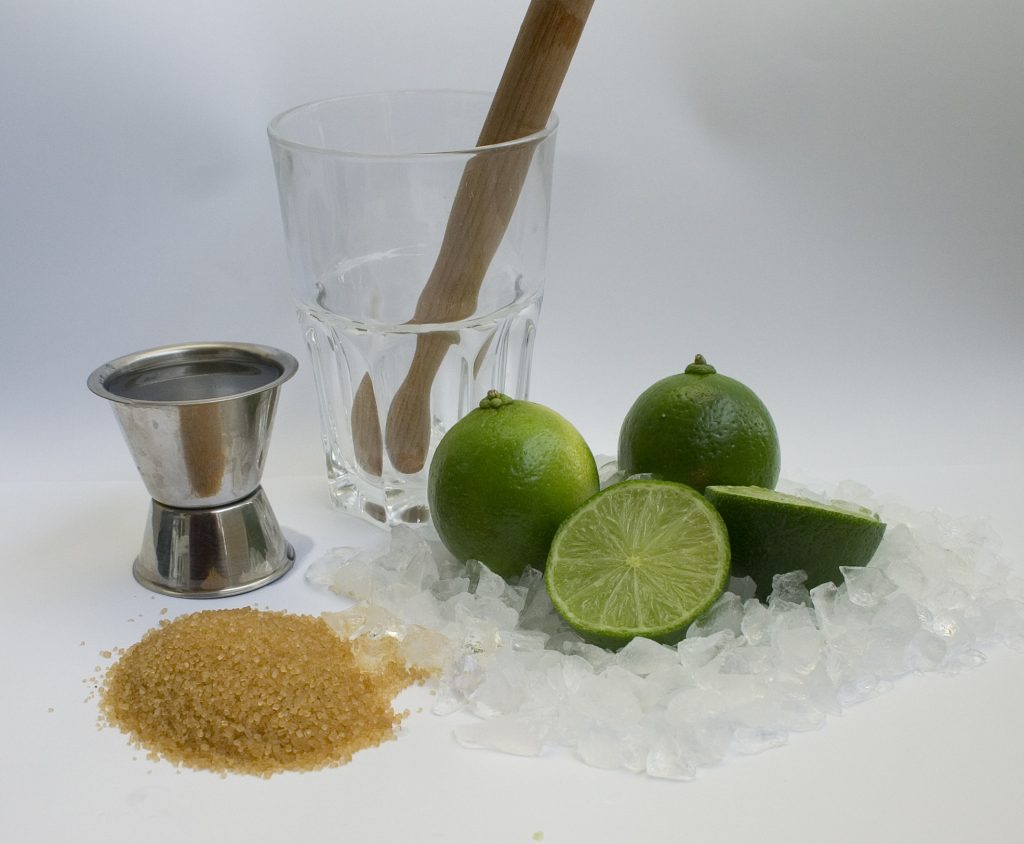
The national alcohol of Brazil is cachaça which is distilled from sugar cane. The national cocktail is Caiprihinia made from cachaça, lime juice, sugar and ice. Pretty refreshing and definitely worth trying!
Experience Brazil not only with your eyes but with all of your senses. Enjoy the variations in taste and fall in love with Brazil!
Where Will You Go Next ?
- Popular Destinations
- Antarctica
- The Arctic
- South America
- Central America
- More to explore
- Amazon
- Antarctic Circle
- Antarctic Peninsula
- Argentina
- Bolivia
- Brazil
- Canadian Arctic
- Chile
- Colombia
- Costa Rica & Panama
- East Antarctica
- Ecuador
- Galapagos Islands
- Greenland
- Guatemala & Honduras
- Machu Picchu
- Mexico
- Patagonia
- Peru
- South Georgia and Falkland Islands
- Spitsbergen
- Sub Antarctic Islands

Talk to one of our experienced Destination Specialists to turn your Antarctic, Arctic and South American dream into a reality.
Contact us